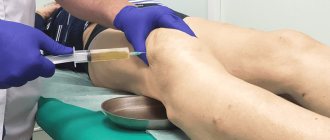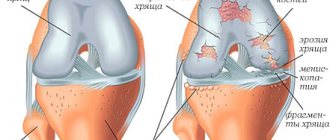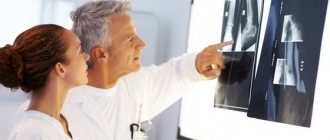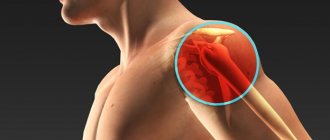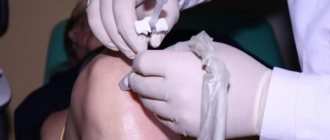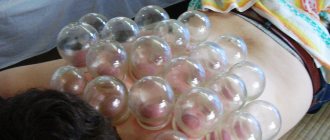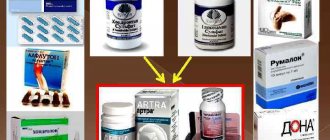Contraindications for the use of nicotinic acid
The substances in the drug can cause allergic reactions. This shows up as:
- rash;
- skin redness;
- itching;
- labored breathing.
Treatment with this drug is also undesirable in the following cases:
- hypersensitivity to the components of the drug;
- atherosclerosis;
- hepatitis;
- cirrhosis of the liver;
- gout;
- diabetes.
An excess of the substance in the blood can affect the condition of the intestines and disrupt its functioning. In this case, there will be a strong rush of blood to the upper body.
When choosing any treatment methods for a disease such as osteochondrosis, remember that only a doctor should make a decision about taking any medications. Do not self-medicate, take care of your health.
Use of the drug in tablet form
Nicotinic acid tablets are used for diseases of moderate severity, for prevention, and for a long course of therapy. The tablet form of these drugs is the best method of home treatment, which does not require careful supervision by medical personnel.
It is recommended to take vitamins with nicotine twice a year (in spring and autumn) for people with poor blood supply to the spine. The duration of the course of treatment is selected by the doctor depending on the degree of development of the disease. This remedy perfectly fights aching pain in the back and neck, expanding the vessels of the spinal canal and improving blood supply to adjacent tissues.
These vitamins are also used as needed during a chronic inflammatory process.
The dosage of the tablet form of the drug is calculated depending on the patient’s weight and the course of the disease. When taking vitamins, it is advisable to include additional sources of methionine in your diet to protect the liver from damage. This could be, for example, fermented milk products.
Nicotinic acid injections for osteochondrosis
Nicotinic acid has several medicinal properties. It dilates blood vessels, improves blood circulation, and regulates redox processes. Nicotinic acid is included in the mandatory treatment program for many pathologies, including acute and chronic osteochondrosis.
Composition and pharmacological action
Nicotinic acid (synonyms: vitamin PP, vitamin B3, niacin) belongs to the group of drugs that affect tissue metabolic processes. This is a vitamin preparation, but in its pharmacological action it is not inferior to the action of medicinal drugs.
Nicotinic acid is found in its natural form in vegetables and fruits, fish, dairy products and cereals. For a healthy person, vitamin intake from foods is sufficient. But with illnesses, the need for it increases sharply.
Used for medicinal purposes, preparations with nicotinic acid dilate blood vessels, increase blood fluidity, stabilize blood cholesterol levels, and prevent blood clots.
Most often, nicotinic acid is prescribed for neurological diseases. This is one of the vitamin preparations with a healing effect. The introduction of vitamin PP has a beneficial effect on nerve cells.
All forms of drug release
Due to the dilation of blood vessels, blood flows into the pathological focus, which accelerates the healing and regeneration process.
Niacin is an activator of enzymatic processes, a component for the formation of sex hormones (estrogen, testosterone, progesterone). Preparations based on nicotinic acid are included in the treatment program for removing toxic substances from the body.
Regular maintenance therapy with nicotinic acid is indicated for patients with chronic headaches and migraine attacks.
The drug is available in the form of tablets and 1% injection solution.
What medications should I take for osteochondrosis?
Medicines for osteochondrosis differ not only in the form of release. They are also divided into the following pharmacological groups.
Anti-inflammatory drugs for the treatment of osteochondrosis
The work of non-steroidal anti-inflammatory drugs for osteochondrosis is based on suppressing the production of prostaglandins - hormone-like substances that cause inflammation and pain in the affected areas. Non-steroidal drugs for osteochondrosis can quickly eliminate pain and hot skin, restore local metabolism, relieve swelling, discomfort and deterioration of sensitivity, and relieve pressure on the nerve roots of the spine.
Non-steroidal anti-inflammatory drugs for the treatment of osteochondrosis are produced in various dosage forms - capsules and tablets, gels and creams, solutions for intramuscular, intravenous or subcutaneous administration. Treatment of NSAID drugs for osteochondrosis usually involves a combination of different forms. For example, tablets are used as the main therapy, gels and ointments “quench” residual inflammation, and injections are needed for pain relief. Patches (for example, Voltaren, Versatis) help relieve inflammation at all stages of treatment.
The list of NSAID drugs for osteochondrosis includes:
- artradol;
- ibuprofen (nurofen, dolit, ibuprom);
- ketoprofen (ketonal, fastum, bystrumgel, flexen);
- diclofenac (Voltaren, Diclac, Diclobene, Dicloran Plus, Ortofen);
- ketorolac;
- xefocam;
- indomethacin (indovazin, indobene, indocid);
- nimesulide (nimesil, nise, nimulid, nimika);
- naproxen;
- piroxicam;
- Celebrex (celecoxib);
- febrofide;
- meloxicam (movalis, movasin).
Steroid (hormonal) anti-inflammatory drugs for osteochondrosis are rarely used - mainly in the most advanced cases. These include prednisolone, cortisone, dexamethasone and others.
Chondroprotectors
With osteochondrosis, the spring function of the intervertebral discs deteriorates, which directly depends on the volume of cartilage tissue and its elasticity. To maintain sufficient cartilage thickness, the body must regenerate cartilage cells (chondrocytes) at a rate that roughly matches their destruction. But with dehydration, unbalanced nutrition, stress, metabolic or anatomical disorders, the rate of decay of chondrocytes increases, and new cells are either inhibited in growth or have an insufficient margin of safety. To protect cartilage and restore its normal growth rate, it is worth taking special products based on glucosamine and chondroitin - chondroprotectors. Chondroprotective drugs for the effective treatment of osteochondrosis can stabilize the condition of cartilage, prevent its further destruction and, subject to all medical recommendations, even help restore lost chondrocytes.
Chondroprotective drugs for osteochondrosis include:
- artracs;
- chondrolone;
- rumalon;
- Don;
- chondroxide;
- osterepar;
- teraflex;
- alflutop;
- collagen ultra.
Some of them (for example, Dona) contain only glucosamine, others (Structum, Chondroxide) - only chondroitin. Modern drugs combine active ingredients and additionally include vitamins (artracam).
For a sustainable effect, chondroprotectors (in the form of tablets, injections or external agents) must be taken for life, in courses of 3-6 months.
Warming drugs
To eliminate discomfort in osteochondrosis, the so-called. warming medications. They:
- dilate blood vessels in the skin, which inhibits the transmission of pain impulses to the brain;
- improve blood microcirculation in connective tissue;
- distract the patient from unpleasant sensations.
When irritating drugs are applied, the peak effect is observed after half an hour, and the analgesic effect lasts for 2-4 hours. A local increase in skin temperature is normal.
The list of drugs for the treatment of osteochondrosis includes ointments, creams, gels and tinctures based on:
- camphor (camphor ointment);
- turpentine;
- benzyl nicotinate;
- nonivamide;
- capsaicin (espol ointment, capsicum tincture);
- bee and snake venom.
Most of these drugs have a combined composition - for example, bee venom and NSAIDs or snake venom, salicylic acid and turpentine. Therefore, before use, you must make sure that you are not allergic to each of the components.
Local and general analgesics
Painkillers for osteochondrosis are usually used in the form of tablets and injections. For moderate pain, the usual medicines in the medicine cabinet can help - analgin or paracetamol. Nefopam and Ambene are also effective (has an anti-inflammatory effect, which reduces pain).
In the later stages of osteochondrosis, opioids are prescribed - potent drugs with a number of contraindications. These include tramal (tramadol).
For complex pain relief (for example, blockade), the so-called. “cocktails” that simultaneously have an analgesic, decongestant, anti-inflammatory, local anesthetic and allergen-reducing effect. The composition may include lidocaine or novocaine, bupivacaine, corticosteroids, vitamin B12 and other components.
Important! Analgesics only relieve pain without affecting its cause. Therefore, without proper treatment, osteochondrosis continues to progress, requiring a transition to increasingly serious painkillers.
Vasodilators
Vasodilators for osteochondrosis, or vasodilators, help restore normal blood supply to the tissues around the affected intervertebral joints.
Pain and muscle tension cause the blood vessels to narrow. This impairs tissue nutrition, causes oxygen starvation of the brain and accelerates the progression of the disease. Therefore, in case of cervical osteochondrosis, drugs to normalize blood circulation are especially important. During rehabilitation therapy the following are used:
- pentoxifylline, or trental (vasodilator);
- xanthinol nicotinate (improves blood flow, reduces swelling of nerve roots);
- aminophylline (eliminates circulatory failure);
- Mexidol (pressure and metabolic processes stabilizer);
- vasonite-retard, octolipene (microcirculation stimulants);
- actovegin (tissue regeneration stimulator);
- Cavinton (promotes saturation of tissues with oxygen, dilates blood vessels);
- berlithion (antioxidant).
Vascular medications for osteochondrosis improve peripheral blood circulation and cellular metabolism and relieve pain.
Antispasmodics and muscle relaxants
To eliminate spasm and tension, antispasmodics and muscle relaxants are used. They normalize blood circulation, relieve pain, and restore mobility. Patients are prescribed:
- sirdalud (tizanadine);
- mydocalm (tolperizole);
- baclofen;
- cyclobenzaprine;
- novocaine, lidocaine, trimecaine.
To enhance the effect of drugs to relax muscles in osteochondrosis, they can be prescribed together with clonazepam or diazepam (prescription drugs). These drugs can be addictive, so they are used with caution.
Sedatives
Symptoms of osteochondrosis and treatment with drugs often provoke chronic stress, emotional stress, depression and other disorders of the psycho-emotional spectrum in patients
For general calming and combating insomnia, you can use herbal preparations - for example, tincture of valerian, motherwort, peony.
For more serious disorders, antidepressants are recommended - gidazepam, Cymbalta, Eglonil, Donormil.
Vitamin and mineral complexes
Since osteochondrosis is considered a disease of the whole body, complex vitamin and mineral therapy (complivit, duovit, doppelhertz, multi-tabs) is of great importance. Vitamins A, groups B, C, D, E, calcium and phosphorus preparations help to significantly improve the condition.
Vitamin A
(retinol acetate) is a natural antioxidant that stimulates collagen production and reduces the destruction of chondrocytes, promotes the renewal of joint tissue.
B vitamins
(cyanocobalamin, milgamma, neuromultivit, neurobion, neurorubin, neuroplex, celtican complex, pyridoxine, thiamine) reduce pain, inflammation and numbness of the hands, improve the sensitivity of nerve fibers.
Vitamin D
(calciferol, aquadetrim, vigantol) is responsible for the absorption of calcium and helps restore bone tissue lost due to osteochondrosis.
Vitamin E
(tocopherol) is necessary for normalizing blood circulation, protecting against free radicals and cartilage regeneration.
Don't self-medicate! Good luck to you in the treatment of osteochondrosis!
Images designed by Freepik
The use of nicotinic acid in electrophoresis
For osteochondrosis of the cervical spine, electrophoresis with nicotinic acid is one of the frequently prescribed procedures. It provides a safe and painless method of delivering medication to the area of lumbar or cervical injury. Thanks to electrical impulses, it penetrates deeply into the layers of the dermis, further spreading along with the bloodstream and lymph throughout the body.
Electrophoresis with a nicotine solution is carried out in a course of an average of 10 sessions. The principle of operation of the device can be galvanic, diadynamic, sinusoidal modulated, fluctuating or with rectified current, but the essence of the procedure does not change. Working with the drug involves the following features:
- the medicinal product must not contain impurities;
- the effect of the expiration date should be taken into account;
- Distilled water is used to prepare the solution;
- a special pad is placed on the body, under which there is filtered paper moistened with an acid solution;
- The temperature of the liquid is brought to 38 C.
Often, to increase the effectiveness of osteochondrosis, electrophoresis using nicotinic acid and aminophylline is prescribed.
Such a procedure involves taking into account the patient’s age, skin condition, drug tolerance and other individual characteristics.
In some patients, the reaction to electrophoresis using a solution of nicotinic acid may be redness and irritation of the skin; if such effects occur, the session is stopped.
Nicotinic acid belongs to the category of effective medications, often prescribed for the treatment of cervical and lumbar osteochondrosis.
Despite the wide range of positive effects on the patient’s condition, its use must be approached with caution and without violating the rules of use. Special instructions and prescriptions are contained in injection therapy, which are often used to relieve pain during exacerbation of the disease.
Pros and cons of injections for osteochondrosis
Injections for osteochondrosis have a number of advantages over non-injection forms of drugs:
- the entire dose of the substance enters the bloodstream, so it is easy to calculate;
- immediate effect (in 2-3 minutes);
- maximum effectiveness, especially when using droppers;
- no negative effect on the gastrointestinal tract;
- When the drug is administered locally, it acts directly on the source of inflammation and pain, without affecting other body systems (minimum side effects).
Self-injections for osteochondrosis of the cervical spine and other areas of the spine can provoke a number of serious complications. Disability and death cannot be ruled out.
Even the most effective injections for osteochondrosis have their drawbacks:
- local complications (hematoma, vessel damage, etc.);
- pain and discomfort during insertion;
- general complications (infection, embolism, etc.);
- the need to visit a treatment room for several days or call a medical professional at home;
- the possibility of increased pain after the action of the drug and the appearance of an “addiction symptom” when the patient requires a stronger drug or an increased dose of the drug.
Considering the high likelihood of complications, treatment with injections for osteochondrosis of the lumbosacral spine and other areas should be carried out under the supervision of a doctor.
Past and present of nicotinic acid
Surprisingly, this “discovery” is not new. Back in the early 60s, the American scientist, as well as the founder of such teachings as Dianetics and Scientology, L. Ron Hubbard, revealed the ability of the vitamin we are considering to remove waste and harmful toxins from the body. He also proved the safety of this vitamin for humans when consumed in excessive dosages (several thousand milligrams per day). However, a refutation was later found.
We advise you to study - Calcium supplements for the prevention of osteoporosis in women
Niacin has been serving doctors for more than forty-five years as a means of detoxifying the body of patients with osteochondrosis.
An example from world history: American firefighters and rescue workers who worked on September 11, 2002 in New York at the World Trade Center (also known as the Twin Towers) underwent a Detoxification program after committing a terrible act of terrorism. It was based on Ron Hubbard's research on niacin. It was also passed by rescuers and volunteers who cleaned the Gulf of Mexico and the beaches adjacent to it from oil.
In general, niacin exists in two different forms:
- a nicotinic acid;
- Nicotinomide.
1867 was the time when they were able to create a new derivative product from nicotine for the first time - nicotinic acid. However, then no one bothered to understand how important this component is.
Only seventy years later - in 1937 - the importance of nicotinic acid for the health of the human body was finally revealed.
Nicotinic acid was recognized as a useful medicine only after a long time.
The forms of niacin depend on the foods in which it is found. If we are talking about products of animal origin, it takes the form of nicotinamide. If we talk about products of plant origin, then it takes the form of nicotinic acid.
If we talk about the effect of this substance on the body, both forms of the element are the same. Still, nicotinic acid has a strong vasodilating effect.
The body itself is able to create this element by converting the amino acid tryptophan. Scientists estimate that one milligram of niacin requires about sixty milligrams of tryptophan. Thus, the daily requirement can be expressed in terms of niacin equivalent. It corresponds to one milligram of niacin or sixty milligrams of tryptophan.
About the disease
In general, osteochondrosis is a disease in which intervertebral discs change pathologically.
It should immediately be noted that although this is paradoxical, medical luminaries believe that the number one cause of this disease is upright walking (moving on two legs), caused by the long process of human evolution.
Osteochondrosis is an extremely dangerous disease of the spine for humans.
In addition, various studies in the field of medicine suggest the idea that this kind of human disease was present among ancient people. The following conclusion follows from this: upright walking was not the original feature of man. This means that over time the spine itself was able to adapt to this type of walking. However, modern statisticians claim that the adaptation process was not completed completely.
In addition to a person’s genetic predisposition to osteochondrosis, there are other reasons for its occurrence. These include the following.
Table No. 1. Causes of osteochondrosis
| Cause | Description |
| Poor nutrition | Usually the body receives the right amount of useful elements. With osteochondrosis, a problem arises in the delivery of necessary substances due to compression of the main arteries through which they arrive. This can develop due to poor nutrition. |
| Poor physical fitness | If the patient’s back muscles are weak, the entire load falls on the spine and it is unknown what the maximum load that a person can withstand in such a situation is. It's better for him not to lift weights, otherwise he might make things worse for himself. |
| Age | Osteochondrosis often occurs in adults thirty-five to forty years old. But now more and more young people are faced with this disease. It's all about sedentary work. She is the cause of all problems. |
| Overweight (obesity) | Increasing the amount of fat in the body, which is “enemy number one” for bones and the spine. If muscles are responsible for protecting and supporting the human skeleton, then fat deposits cause an increase in the load on the patient’s body and deformation of the intervertebral discs. |
| Spinal injuries | Any bruise or fracture increases the chance of the appearance and further development of osteochondrosis. |
In general, if osteochondrosis is detected and treated in time, the influence of these causes is neutralized.
Lumbar osteochondrosis
Treatment of patients with neurological manifestations of lumbosacral osteochondrosis should be comprehensive and step-by-step. At the first medical appointment, a clinical and functional examination (clarification of complaints and collection of anamnesis) and a clinical examination are carried out. A neurologist examines the dynamic and static function of the spine, evaluates posture and parameters of paravertebral muscle tone, and determines the degree of mobility of various parts of the spine and limbs. The standard treatment regimen for osteochondrosis includes:
- elimination of unfavorable loads
- immobilization (use of corsets, orthoses, orthopedic styling)
- drug therapy
- physiotherapeutic procedures
- gentle acupressure
- Exercise therapy
- acupuncture
- mud therapy
- traction techniques (traction)
If conservative methods do not provide the desired effect, surgery may be required.
Physiotherapy for lumbar osteochondrosis
To eliminate pain, reduce swelling, normalize the tone of the back muscles, activate recovery processes, resolve fibrous lesions and increase the mobility of damaged segments, a set of physiotherapeutic procedures is used:
- pulsed diadynamic currents
- darsonvalization
- magnetotherapy (exposure to a static or alternating magnetic field)
- laser treatment
- drug electrophoresis
- UV irradiation
- local cryotherapy
- ultrasound
- transcutaneous electrical nerve stimulation
Thanks to combined physiotherapy with the simultaneous use of several methods, the effectiveness of therapy for lumbar osteochondrosis increases by 30%.
Physiotherapy
A special role in the conservative treatment of degenerative pathologies of the musculoskeletal system is given to recreational physical education. Rehabilitation instructors develop individual sets of dynamic and stretching physical therapy exercises for spinal osteochondrosis. This takes into account the gender, age and physical capabilities of the patient.
Optimized therapeutic exercises are aimed at strengthening the muscles of the back, abdominals, pelvic area and lower extremities. Thanks to training therapy, pathological muscle tension is eliminated, pressure on the intervertebral discs is reduced, swelling and pain are eliminated, the spine is stabilized, and posture is improved.
Surgical intervention
The absolute indication for decompressive surgery is disabling radiculomyeloischemia. This dangerous pathological condition is caused by hernial compression of the nerve roots and impaired blood flow in the sacrococcygeal area. It leads to periodic intolerable pain, pelvic organ dysfunction, intermittent claudication and other motor, reflex or sensory disorders. A relative indication for surgical stabilization is the lack of effect from long-term conservative therapy (more than 1.5-2 months).
Endoscopic methods of osteoplasty are recognized as the most optimal: installation of interbody implants and fixing cages made of biocompatible materials. Minimally invasive interventions quickly restore weight-bearing ability to the operated area and allow early rehabilitation to begin.
Injection treatment (injections for lumbar osteochondrosis)
The main manifestation of osteochondrosis of the lumbosacral region is pain. This complex multicomponent symptom is associated with local inflammation, pathological muscle tension, ligamentous damage, biomechanical causes and dysfunction of the pain perception system. Therefore, treatment should be carried out in a complex manner. For faster pharmacological action and reduction of gastro- and cardio-risks, injection therapy drugs are prescribed:
- anti-inflammatory (NSAIDs)
- painkillers (analgesics)
- muscle relaxants (relaxing, relieving muscle tone)
- vasodilators (improving blood microcirculation)
- chondroprotectors (stimulating the regeneration of intervertebral discs, slowing down the destruction of cartilage tissue).
On the recommendation of a doctor, homeopathic injections and vitamins can be used to treat osteochondrosis. To quickly and effectively relieve severe pain, paravertebral therapeutic blockades (injections into the area of the lumbosacral nerve plexus) are prescribed.
Drug therapy
Traditionally, complex therapy for degenerative diseases of the spine includes treatment with tablets and capsules, similar to the injection technique:
- NSAIDs (non-steroidal anti-inflammatory drugs)
- analgesics
- myotropic antispasmodics (medicines to relieve muscle spasms)
- vegetative correctors (stabilizers of the tone of the autonomic nervous system)
- vasodilators (to improve blood flow and tissue trophism)
- dosage forms of chondroitin and glucosamine
- sedatives and antidepressants (to relieve emotional tension and chronic stress)
- vitamin and mineral complexes
Tablet drugs for the treatment of osteochondrosis of the lumbosacral region are prescribed for a long term (up to 2 months or more).
Effective injections for lumbar hernia
For uncomplicated illness, medications are used:
- nonsteroidal anti-inflammatory drugs (NSAIDs), which relieve pain and inflammation;
- B vitamins – increase blood flow, disturbed by pinched nerve endings, and accelerate the restoration of fibers of damaged nerves;
- muscle relaxantsnecessary for relaxing muscles and relieving spasms.
Vitamins restore the sensitivity of all tissues and are used for 5-10 days in the form of intramuscular injections, after which possible rare injections for several weeks (2-3 times a week) or switching to tablet form. The most common and effective medications are: Nicotinic acid, Milgamma and Combilipen (they contain lidocaine in addition to vitamins B1, B6, B12), Neuromultivit and Neurobion. These injections for hernia of the cervical, sacral and lumbar spine are contraindicated for minors and pregnant women, as well as in the presence of an allergic reaction to medicinal components.
Muscle relaxants in ampoules in pharmacies are represented by Mydocalm or Calmirex, which additionally contain lidocaine. The latter enhances the effect of the component and additionally relieves pain. Duration of use – 5 days. The medicine cannot be used if you are allergic to lidocaine and its components and myasthenia gravis.
Kinds
What injections are given for osteochondrosis of the cervical spine and other areas of the spine is chosen for each patient by the attending doctor. The following groups of drugs are used:
- analgesics;
- NSAIDs;
- hormonal;
- muscle relaxants;
- chondroprotectors;
- vitamins;
- improving blood circulation;
- homeopathic.
Injections for osteochondrosis of the thoracic region are prescribed less often than for neighboring parts of the spine, since it is less susceptible to degenerative changes.
Non-steroidal anti-inflammatory injections
NSAIDs for spinal osteochondrosis are considered one of the most effective in the fight against inflammation, quickly and permanently eliminating pain and swelling. Due to the fact that they stop the action of prostaglandins, the inflammatory process stops. In addition, the sensitivity of the nerve plexuses and endings is blocked. Long-term use can cause abdominal and headache pain, dyspeptic disorders, dizziness, skin rash and other undesirable symptoms, including gastric bleeding.
Ortofen
The active ingredient is diclofenac sodium. One injection lasts for 12 hours. Usually a one-week course is required.
Ketorolac
The active substance is ketoprofen. Considered a strong analgesic. It is given for 1 week, 2 times a day.
Meloxicam
The drug is a selective COX-2 inhibitor, as a result of which it has fewer side effects. The course of therapy lasts on average 7-10 days, 2 injections per day.
Movalis
This is a German drug based on meloxicam. The product is injected deep into the muscle, providing an effect for 24 hours. The course lasts no more than a week.
Diclofenac
This non-steroidal anti-inflammatory drug is considered the “gold” standard. It is most often used for injections for lumbar osteochondrosis and other diseases of the musculoskeletal system.
Blockades
Nerve blocks are performed only for emergency indications. One or several drugs are administered, differing in the mechanism of action on the site of inflammation.
Novocaine
Included in the list of vital medications. It is a local anesthetic with a wide range of therapeutic effects. Quickly relieves pain.
Dexamethasone
A synthetic glucocorticosteroid with anti-inflammatory, antiallergic and immunosuppressive effects.
Prednisolone
A hormonal remedy to help in emergency situations with spinal osteochondrosis.
Muscle relaxants
Muscle relaxing injections for osteochondrosis are included in the treatment regimen to relieve muscle spasm, restoring normal blood circulation and the flow of nerve impulses.
Mydocalm
The active substance is tolperisone. Has a central effect on skeletal muscles.
Chondroprotectors
Course injections of chondroprotectors for spinal osteochondrosis help restore cartilage tissue, stopping the processes of its destruction.
Elbona
A Russian drug based on glucosamine sulfate.
Alflutop
The active component is represented by a biological concentrate obtained from small marine fish.
Mucosat
The active ingredient is chondratin sulfate.
Rumalon
Peptide complex from cartilage tissue and bone marrow of calves.
Vitamins
Vitamin injections are prescribed after relief of an “acute condition” and to prevent exacerbations of osteochondrosis.
Milgamma
A German drug consisting of B vitamins and lidocaine. It has a complex effect on the spine and the body as a whole. Metabolic processes, tissue trophism, and nervous system function improve.
Combilipen
Russian analogue of Milgamma. Has a good therapeutic effect. Injections for osteochondrosis are given for 5-10 days.
Dosage of the drug
The acid is applicable in 2 forms:
- Injection liquid;
- Pills.
Very often, nicotinic acid is prescribed in both forms for cervical osteochondrosis. Acid will improve blood circulation, sleep, memory, and improve the general condition of the body in the near future. In addition, the drug will give your body vigor and optimism.
https://www.youtube.com/watch?v=fKW0jDye5R4
To achieve the desired result, this vitamin must be taken up to 300 mg per 24 hours, and up to 100 mg at a time. And the average person’s need for vitamin PP per day is 20 mg. You can adhere to this recommendation by eating foods that contain this substance. But this dose is used by the human body to maintain the skin in good condition, transform cholesterol and cell respiration. For osteochondrosis, the use of nicotinic acid during electrophoresis perfectly relieves pain.
We advise you to study - Remedies for chondrosis
Nicotinic acid injections
Often, nicotinic acid injections are used for acute osteochondrosis, 2 ml in solution. Since the injection is very painful, the medication is injected slowly into the vein. In addition, the attending physician may prescribe injecting the drug into the muscles or under the skin. If the medicine is administered very quickly, it will lead to mild nausea, malaise and high blood pressure.
Nicotinic acid tablets
It is recommended to take the tablets for 15-20 days, taking them only after meals. If you do not have the opportunity to eat before taking the medicine, it is recommended to take the tablets with yogurt or milk. Adults are prescribed 1 tablet 2-4 times a day. The dose can be increased gradually. But the appointment should only be made by the attending doctor. Since an excess of nicotinic acid has an even more negative effect on the body than its deficiency, and the medication itself has contraindications.
Is there an alternative?
Hormone injections reduce pain due to arthrosis of the ankle, knee, and hip, but also have a negative effect on the body. They are especially dangerous in case of diabetes mellitus, arterial hypertension, stomach ulcers, and also if the patient’s kidney function is impaired. In addition, corticosteroids only temporarily relieve pain, which means that a person will need a larger dose each time.
Instead of harmful corticosteroids, which also do not cure, you can choose other therapeutic methods:
- injections of chondroprotectors, which are aimed at restoring damaged cartilage tissue and normalizing metabolism in the joint (the course ranges from 3 to 15 injections);
- injection of a synovial fluid prosthesis, such as Noltrex, which expands the damaged cartilage surfaces, mixes with the joint fluid and returns the joint to normal functioning.
The course of injections of synovial fluid prosthesis is 2-5 procedures. After this, you can forget about arthrosis for 1-1.5 years. The drug based on hyaluronic acid or synthetic Noltrex is safe for the gastrointestinal tract and other body systems and will not harm diabetics or people with high blood pressure.
If you are experiencing severe joint pain, do not rush to relieve it with hormones. Consider a future-proof treatment option instead of drugging your body with corticosteroids for a long time.
Types of injections for osteochondrosis
Regardless of the method of administering the vitamin, it is undeniable that the more effective method of treating osteochondrosis is injection. The same reviews can be heard from the attending physician, namely:
- Speed of action: enters directly into the blood or affected tissues, relieving inflammation of the lesion.
- Exact dosage: the product has the correct effect on the entire body, improving the functioning of all systems.
- Place of action: for severe pain in the cervical spine, the doctor prescribes injections. They inject into the spine, blocking the nerve roots of the diseased vertebra.
- The resulting effect: when using the ampoule type of the drug, a positive effect is achieved in a shorter time.
The symptoms of osteochondrosis are as follows:
- persistent pain throughout the upper body;
- problems with brain nutrition;
- fainting and frequent dizziness;
- decreased acuity of the main sense organs;
- limited movement of limbs;
During the development of osteochondrosis, the patient often experiences headaches and discomfort in the upper extremities.
Usually, a patient who suffers from moderate osteochondrosis is prescribed nicotinic acid, which is a good medicine. It can even be taken at home. In addition, it is easy to purchase since there is no need for a prescription and frequent consultations with a doctor.
Nicotinic acid perfectly removes various symptoms of osteochondrosis. It also helps blood vessels dilate and the blood become enriched with oxygen.
Nicotinic acid is taken both permanently and temporarily (if necessary). Please note that it should be taken only after meals.
NSAIDs should be used with caution in case of gastric ulcer and gastritis. When administered intramuscularly, the drugs are absorbed into the blood and also have an effect on the gastric mucosa, like tablets, and therefore can provoke an exacerbation of these chronic diseases.
Increased blood pressure and swelling of the legs are possible due to the retention of sodium ions in the body.
Contraindications for blockades:
- severe deformation of the spine, technically excluding the possibility of blockade:
- pustular skin diseases at the site of blockade;
- allergic reactions to local anesthetics.
Arthrosis is a fairly common pathology that affects the human joint. It contributes to its deformation and degenerative changes in cartilage. Most often, osteoarthritis affects the knee joint, as well as the hip. Slightly less common on the fingers and ankles.
The disease is arthrosis, the treatment of which is very varied and in often cases productive. The most important thing is to consult a doctor in time if you notice the first symptoms:
- local pain (aching, sharp);
- decreased walking activity;
- characteristic crunch;
- visual deformation of the joints.
There are a large number of treatment options for arthrosis, depending on its stage and type:
- surgical intervention;
- non-drug treatment;
- drug therapy;
- treatment with traditional methods.
What vitamins help with osteochondrosis?
One of the contributing factors in the appearance and progression of osteochondrosis is an unbalanced diet and improperly dosed physical activity. And if degenerative changes are already visible on an MRI of the spine or make themselves felt by back pain, a feeling of numbness or tingling in the extremities, a neurologist can prescribe vitamin therapy for you - injection or drip administration of B vitamins. A regimen of vitamin injections is developed individually depending on your needs , complaints and health status of each patient. So, to maintain muscles and muscle corset, vitamin B6 injections are given. This vitamin is also needed for the normal functioning of the nervous system, so when there is compression of the nerve roots, it is advisable to use drugs containing pyridoxine. Vitamin B1 injections have a positive effect on the functioning of the entire central and peripheral nervous system. Especially injections of this vitamin are beneficial for improving the functioning of the nerves responsible for nutritional processes in tissues. A neurologist will prescribe a course of vitamin B12 injections for the prevention and treatment of demyelination (the process of destruction of nerve cells and damage to the nerve sheath). In addition to B vitamins, vitamin D is sometimes prescribed for degenerative changes in the spine. Vitamin D or calciferol is a vitamin that determines the ratio of calcium and phosphorus in the body. The positive effects of vitamin D are still being studied. Thus, D-vitamin therapy is even used to prevent the development of cerebral atherosclerosis and slow down the aging of the body. The form of taking this vitamin is through the mouth (orally). These vitamins are produced in oil and water solutions. Thus, by undergoing inexpensive complex treatment with vitamins for osteochondrosis, the patient can reduce or completely eliminate symptoms such as:
- numbness in the limbs;
- tingling or nagging pain in the arms and legs.
| Service | Price | Price | Promotion Price |
| Appointment with a therapist | primary 1800 rub. | repeat 1500 rub. | |
| Neurologist appointment | primary 1800 rub. | repeat 1500 rub. | free after MRI of the spine |
| Orthopedist appointment | primary 1800 rub. | repeat 1500 rub. | free after MRI of the joint |
| Consultation with an acupuncturist | primary 1800 rub. | repeat 1500 rub. | free after MRI of the spine |
| Vertebrologist consultation | primary 2000 rub. | repeat 1800 rub. | |
| Consultation with a chiropractor/osteopath | primary 2500 rub. |
| Service | Price according to Price | Discount | Discount |
| Plasma therapy of the spine or joint | 1 session 4000 rub. free doctor's appointment | 3 sessions 10,500 rub. free doctor's appointment | 5 sessions 17,500 rub. free doctor's appointment |
| Classic acupuncture session | 1500 rub. | ||
| Complex acupuncture session | 2000 rub. | ||
| Manual osteopathy session | 2500 rub. | ||
| Manual therapy session | 2500 rub. | ||
| Autohemotherapy | 550 rub. | 5 sessions 2500 rub. | 10 sessions 5000 rub. |
| Novocaine therapeutic blockade | 1500 rub. | ||
| Therapeutic paravertebral blockade | 1500 rub. | ||
| The blockade is therapeutic and medicinal, complex (use of several drugs) | 2000 rub. | ||
| Therapeutic intra-articular blockade with diprospan | 2500 rub. | ||
| Joint puncture with removal of synovial fluid | 2500 rub. | ||
| Intra-articular injection of hyaluronic acid (without the cost of the drug) | 2000 rub. | ||
| Novocaine therapeutic blockade | 1500 rub. | ||
| Therapeutic paravertebral blockade | 1500 rub. | ||
| Therapeutic intra-articular blockade with diprospan | 2500 rub. | ||
| Joint puncture with removal of synovial fluid | 2500 rub. | ||
| Pharmacocupuncture session (drug at the discretion of the doctor) | 2500 rub. | ||
| Pharmacocupuncture session (without the cost of the drug) | 2100 rub. | ||
| Electrophoresis session (without the cost of the drug) | 400 rub. | ||
| Phonophoresis session / Ultrasound therapy procedure (UT) (without the cost of the drug) | 450 rub. | ||
| Magnetic therapy session | 350 rub. | ||
| SMT therapy session (Sinusoidal modulated currents) | 450 rub. | ||
| Vitamin therapy (10 injections) | 4000 rub. free doctor's appointment | 3000 rub. free doctor's appointment | 3000 rub. free doctor's appointment |
| Injections (Vitamins B12) | 800 rub. | 800 rub. | 800 rub. |
| Intravenous administration of drugs | 450 rub. | 5 sessions 2140 rub. | 10 sessions 4050 rub. |
| Intravenous drip administration of drugs (without drugs, 1 bottle) | 800 rub. | 5 sessions 3375 rub. | 10 sessions 6750 rub. |
| Intravenous drip administration of medications (with existing clinic medications, 1 bottle) | 950 rub. | 5 sessions 4050 rub. | 10 sessions 8100 rub. |
| Intravenous drip administration of drugs (without drugs, 2 bottles) | 950 rub. | 5 sessions 4050 rub. | 10 sessions 8100 rub. |
| Intravenous drip administration of medications (with existing clinic medications, 2 bottles) | 1100 rub. | 5 sessions 4700 rub. | 10 sessions 9400 rub. |
| Subcutaneous/intradermal administration of drugs | 250 rub. | 5 sessions 1180 rub. | 10 sessions 2250 rub. |
| Intramuscular administration of drugs | 300 rub. | 5 sessions 1430 rub. | 10 sessions 2700 rub. |
Indications for use
This:
- obstruction of the blood vessels of the extremities,
- in case of problems with cerebral circulation,
- haemorrhoids,
- osteocondritis of the spine,
- a hereditary disease in which there is a problem with the absorption of certain amino acids (Hartnup disease),
- lack of vitamin PP,
- diabetes,
- decreased vision,
- infectious diseases,
- disorders in the limbs associated with vasospasm,
- liver diseases,
- ischemic stroke,
- noise in ears,
- inflammation of the facial nerve,
- lipid metabolism problems,
- skin diseases,
- for disorders of the digestive system,
- glucose intolerance,
- intoxications: medicinal,
- alcoholic,
- professional,
Vitamin B3
According to research conducted by scientists from the USA, it turned out that a vitamin that can equally resist bacteria and infections is vitamin B. More precisely, it is vitamin B3. It copes with most bacteria that modern medicines cannot fight.
In addition, it turned out that niacin is a pure form of vitamin B3, and it significantly enhances the immune system (almost a thousand times). This helps protect against dangerous viruses (for example, protects against Staphylococcus aureus).
Vitamin B3 is a useful helper for the body.
There is an assumption about the ability of nicotinic acid to stop the development of the human immunodeficiency virus (HIV), although very large doses are needed.
During various experiments, doses were used that were many times higher than the daily intake of this vitamin. However, in the end, nicotinic acid remained the same safe element for health.
B vitamins in the form of injections
B vitamins can be taken by mouth or orally, as well as parenterally or by injection. In order for the body to take the maximum dose of vitamins, neurologists recommend injecting them. Injections are usually performed in the gluteal muscle. You should know that vitamin injections are somewhat painful, so it is best to do them in a medical clinic. The treatment course of vitamins is 10-20 injections.
If you have such an opportunity, it is best to take vitamins by injection for medicinal purposes, since their bioavailability or absorption by the body is higher when administered by injection.
For neurological problems, it is vitamin injections or droppers that are used, since it is necessary that the maximum possible amount of the drug enters the body and immediately begins to act by combining with blood proteins. As already noted, the most important vitamins for spinal health are B1, B12, B6 and B9. To prevent diseases of the central nervous system with food, a person can consume them if he adds the following products to his diet:
- B1 (thiamine) is found in chicken, liver and grains.
- B6 (pyridoxine) is found in eggs, shrimp, oysters, tuna, ham, chicken, minced beef and lamb, liver, cottage cheese, cheese, and nuts.
- B9 (folic acid ) contains greens, bananas, avocados.
- B12 (cyanocobalamin) contains salmon, liver, lamb, shrimp, sardines, cod, tofu, kelp.
Vitamin B3
According to research conducted by scientists from the USA, it turned out that a vitamin that can equally resist bacteria and infections is vitamin B. More precisely, it is vitamin B3. It copes with most bacteria that modern medicines cannot fight.
In addition, it turned out that niacin is a pure form of vitamin B3, and it significantly enhances the immune system (almost a thousand times). This helps protect against dangerous viruses (for example, protects against Staphylococcus aureus).
Vitamin B3 is a useful helper for the body.
There is an assumption about the ability of nicotinic acid to stop the development of the human immunodeficiency virus (HIV), although very large doses are needed.
During various experiments, doses were used that were many times higher than the daily intake of this vitamin. However, in the end, nicotinic acid remained the same safe element for health.
We advise you to study - “menovazin” for cervical osteochondrosis
Vitamin B17 and cancer treatment
Recently, scientists in search of a cure for cancer are increasingly paying close attention to vitamin B17 (amegdalin), which is found in flax seeds, millet and fruit seeds. Medical debate about the benefits and harms of this substance in the treatment of oncology does not subside. There are a number of studies that suggest that vitamin B17 helps in the fight against cancer. This opinion is shared by a number of medical specialists (American Dr. Krebs and Edward Griffin, Italian Dr. Guidetti), who consider cancer to be a disease caused by a lack of certain elements in the body. They claim that daily consumption of 7-10 apricot kernels prevents the development of cancer. And if cancer has already developed, then with dosed use of vitamin B17, tumor development decreases and the formation of metastases is stopped. But at the moment there are no generally accepted clinical studies confirming the therapeutic effect of vitamin B17 in the treatment of cancer. There are also a number of statements by the American oncologist Lester M Crawford that there is no scientific evidence that drugs with vitamin B17 (for example, laetrile) can cure cancer. Moreover, he believes that B17 is a dangerous compound that contains the deadly component cyanide. But, despite the skepticism of official medicine about the ability of vitamin B17 to help treat cancer, doctors do not give up attempts to study B vitamins as a promising group of substances in the treatment of cancer. Now active experiments are being conducted with vitamin B1.
Author: Telegina Natalya Dmitrievna
Therapist with 25 years of experience
Symptoms of nicotinic acid deficiency and overdose
Symptoms of a deficiency of the substance can be very different, from the appearance of spots on the face (similar to a sunburn), to blisters and blisters on the body, which can later leave scars on the skin. There may also be damage to the mucous membranes, including the tongue and gums. There may be general weakness and lethargy.
Rashes of a dark red color often appear on the skin, the skin becomes dry and rough. Frequent urge to go to the toilet (diarrhea about 10 times a day). Appetite weakens and body weight decreases.
Sometimes there is insomnia and decreased attention. Often, with a lack of nicotinic acid in the body, a person’s thinking slows down and memory deteriorates.
Symptoms indicating a deficiency of nicotinic acid become more pronounced in the warm season, namely in spring and summer.
An overdose of nicotinic acid may cause acute pain in the stomach, dizziness and nausea, clouding of consciousness and even fainting. Sometimes vision and hearing impairment occurs.
Such symptoms are usually observed when taking nicotinic acid 500 mg or more once in its pure form. In case of an overdose of nicotine, you should contact an ambulance. And before her arrival, open the windows to ensure fresh air enters the room. Give the victim water or milk to drink.
Vitamin B12 in neurology
A person should especially monitor the level of vitamin B12 in his body. The fact is that it is an important metabolic substrate for various biochemical reactions in the body. For example, this vitamin serves for the synthesis of red blood cells, enzymes, methionine acid, nucleic acids, and activation of blood clotting. The body takes vitamin B12 from food, and some of it is also produced by special bacteria in the intestines. The body's daily need for this vitamin is very small, but it is essential for the process of hematopoiesis and the healthy functioning of the central nervous system. B12 has the ability to accumulate in the human liver in reserve, so its deficiency is a very serious symptom of diseases such as anemia, damage to nerve tissue or polyneuropathy, stroke due to excess homocysteine in the blood. If a person, for one reason or another, begins to lack vitamin B12, he suffers from systematic weakness, shortness of breath, loss of sensation in the limbs, a limping gait, “cotton leg” syndrome, memory deteriorates, and chilliness in the arms and legs may occur. Often the tongue is an indicator of a lack of vitamin B12 in the body. In a patient in such a situation, the doctor may observe a smooth, bright crimson, varnished tongue with atrophy of the papillae. In neurology, B12 deficiency leads to the fact that the nerve roots of the spine do not receive enough nutrition, and degenerative changes occur in the myelin sheath of the nerves. Due to a lack of vitamin, the membrane is poorly formed, the nerves begin to transmit information incorrectly, that is, they conduct impulses poorly, as a result of which a person loses sensitivity in the legs and arms. The consequences of an acute lack of vitamin B12 can lead to the development of paresis and complete paralysis. These are of course extremes, but still... Insufficient levels of vitamin B12 can also lead to stroke. This occurs due to excess levels of homocysteine in the blood. As a result, the inner linings of the arterial vessels begin to collapse, and cholesterol begins to integrate into these lacunae, forming an atherosclerotic plaque. As a result of this, blockage of first small and then large vessels occurs, thrombus formation and, as a final result, myocardial infarction or stroke.
Previous Next
Disease prevention
In order to prevent the development of the disease or its recurrence, the patient must take the following set of preventive measures.
- Proper nutrition. The patient increases the number of servings, and accordingly the amount of nutrients. In addition, a change in diet is expected - no fast foods or processed foods. The patient should eat more foods rich in proteins and fats. These include fruits and vegetables, various cereals, and meat. All this should be natural. The balance of water in the body is no less important. You need to drink water. Supermarket drinks are not permitted.
- Sports activities. “Movement is life,” Aristotle said many years ago. And indeed it is. Therapeutic exercise strengthens the locomotor system, improves its functioning and restores body functions. Walking, running, aerobics - all this is suitable for the prevention of osteochondrosis.
- Physical exercise. They must be excluded, but evenly. Hard work is canceled because bones, muscles and joints have not yet recovered. Light loads, on the contrary, are allowed in order to develop the locomotor system after the course of treatment.
Indications for use of the drug
The unique composition of nicotinic acid has an antipellagric effect. Therefore, doctors most often prescribe the drug to patients for the treatment of pellagra. This medicine is also called vitamin PP. If you start therapy with nicotinic acid in the first stages, then the disease can be completely cured.
The drug also improves carbohydrate metabolism in the body. That is why nicotinic acid is also suitable for the treatment of such diseases:
- Improves the condition of mild diabetes;
- Prescribed for any diseases of the liver and kidneys;
- Suitable for complex heart treatment;
- Doctors prescribe the drug for stomach ulcers;
- For problems with the duodenum;
- At the time of severe inflammation of the small or large intestine;
- For quick healing of any wounds or deep ulcers.
In addition, the drug acts as a vasodilator. If it is necessary to lower lipoproteins in the blood, doctors prescribe 3-4 grams of nicotinic acid per day to patients. This is a fairly high dose, but in this case it will be appropriate.
Doctors often prescribe the drug to a patient with hypercholesterolemia. Nicotinic acid will lower blood cholesterol and improve the condition of the body. The drug is also prescribed for the treatment of any diseases in the stomach and liver:
- Often used for gastritis;
- To treat inflammation in the stomach;
- Suitable for patients with low acidity;
- Prescribed for acute hepatitis;
- Excellent for liver cirrhosis;
- Used for spasms.
Nicotinic acid is used to heal wounds and ulcers on the face that do not respond to other drugs. The medicine is also suitable for the treatment of inflammation of the facial nerve. Doctors actively use nicotinic acid for atherosclerosis and for any infectious diseases.
The drug is suitable for the treatment of many diseases. However, each case has its own dosage of nicotinic acid and features of use. The attending physician should tell you about this after a complete examination of the patient.
Briefly about the disease
Osteochondrosis is a disorder or deformation of the cartilage of a joint. This phenomenon can develop in absolutely any joint. But most often the intervertebral discs of various parts of the vertebra are subject to such changes.
This is due to the fact that as a person grows older, the main vessel in the intervertebral discs decreases, and the nutrition of adjacent tissues becomes less stable. With such a supply, restoration of disc cartilage tissue after various injuries is difficult. Cartilage loses its elasticity and firmness even with improper nutrition. The consistency of the cartilage changes and its shape is deformed, which leads to severe osteochondrotic processes.
Reasons that negatively affect disk performance include:
- incorrect and asymmetrical functioning of the vertebral muscles;
- getting used to incorrect sitting positions at the desk;
- the habit of carrying a bag on one shoulder, which leads to scoliosis;
- insufficient warm-up before physical activity;
- using too soft pillows and mattresses for sleeping;
- excess weight, which also leads to vertebral deformation.
Excess weight is deposited in various places, making it difficult to maintain balance and placing undue stress on the vertebral joints.
Goals of drug treatment
Treatment of osteochondrosis with drugs is so effective in the early stages of the disease that, with a properly selected treatment regimen, it can completely cure osteochondrosis or permanently eliminate its most unpleasant symptoms. In the later stages, drug control of the disease is possible.
Medicines for osteochondrosis are designed to influence the disease not only symptomatically, but also to eliminate its causes systemically. Therefore, therapy is carried out in the following directions:
- anesthesia of affected areas;
- relieving inflammation and stopping the acute period of the disease;
- restoration of microcirculation in affected tissues;
- improving metabolic processes and protecting cartilage from further destruction (for example, by free radicals);
- regeneration of cartilage tissue in intervertebral discs;
- restoration of mobility in the vertebral joints.
In cases where the disease is accompanied by depression or emotional stress, therapy is also aimed at restoring a normal psychological state.
During the period of remission, patients can do without medications or take them in courses in prophylactic dosages.
Not recommended for anyone
Avoid taking additional vitamins if you suffer from the following diseases:
- individual intolerance to the main or auxiliary components;
- severe forms of arterial hypertension (high blood pressure) and atherosclerosis - in this case, intravenous administration is contraindicated;
- exacerbation of ulcers of the gastrointestinal tract;
- severe liver dysfunction, including cirrhosis, active hepatitis;
- decompensated stage of diabetes mellitus;
- urolithiasis, hyperuricemia (high concentration of uric acid in the blood), gout;
- recent myocardial infarction, history of a sudden decrease in peripheral vascular resistance.
During pregnancy, lactation, in childhood and old age, nicotinic acid is used strictly according to indications.
